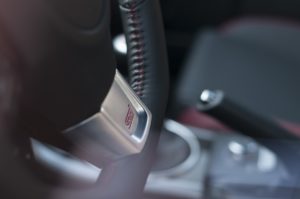
Clutch control refers to when the driver confidently holding the clutch pedal down when steering at a slower speed, with the driver only gaining clutch control with practise. One of the biggest issues with learner drivers is that their training doesn’t necessarily guarantee that they will have all the appropriate opportunities to properly learn clutch control, lending itself to the fact that they may decide to drive automatic cars because it can be seen as the easier alternative. Furthermore, for drivers that do drive a manual vehicle, if a driver resorts to slipping the clutch in order to compensate for being in too high of a gear at a lower speed, this is a bad habit that drivers should always avoid. One of the best ways for drivers to avoid bad habits is to have a complete understanding of what the term ‘biting point’ is referring to. When driving instructors refer to the biting point, they are talking about when the two clutch plates are coming in contact (i.e. biting) which in turn, causes the load that is placed on the engine to increase. Learning to sense the biting point is a pivotal part of drivers learning clutch control. Even more, it also ensures that the car is being driven properly because the clutch plates are able to fully engage in a smooth and effective manner. When the plates are brought together too fast, the engine can stall and/or the vehicle can jump forward. Drivers must learn to practise and judge when the biting point of the clutch plates are engaged, with one of the surest ways being when the front of the car lifts up and the sensation of the engine speed diminishes.
Every car is different which means the feeling of every clutch is different, but there are certain exercises drivers can partake in that will help indicate the biting point of the clutch. Locate a particular area that is void of distractions and heavy traffic. Begin by slowly lifting the clutch in order to gauge how the car lifts and the engine is manipulated. Once the driver feels comfortable in finding the biting point, they are able to practise clutch control of that vehicle by going forward and stopping, and only slightly raising the clutch pedal. This will make the car move very slowly, which is a key part for this exercise to work properly. It is best to practise this in a level area, avoiding hills going up or down. This practise will let drivers test the clutch of any car and evaluate the best ways to manoeuvre that particular clutch for that vehicle. There are quite a few hills in Brentwood so if you’re going to take your driving lessons there, you’ll get plenty of practice using your clutch on a hill!
Leave a Reply
You must be logged in to post a comment.